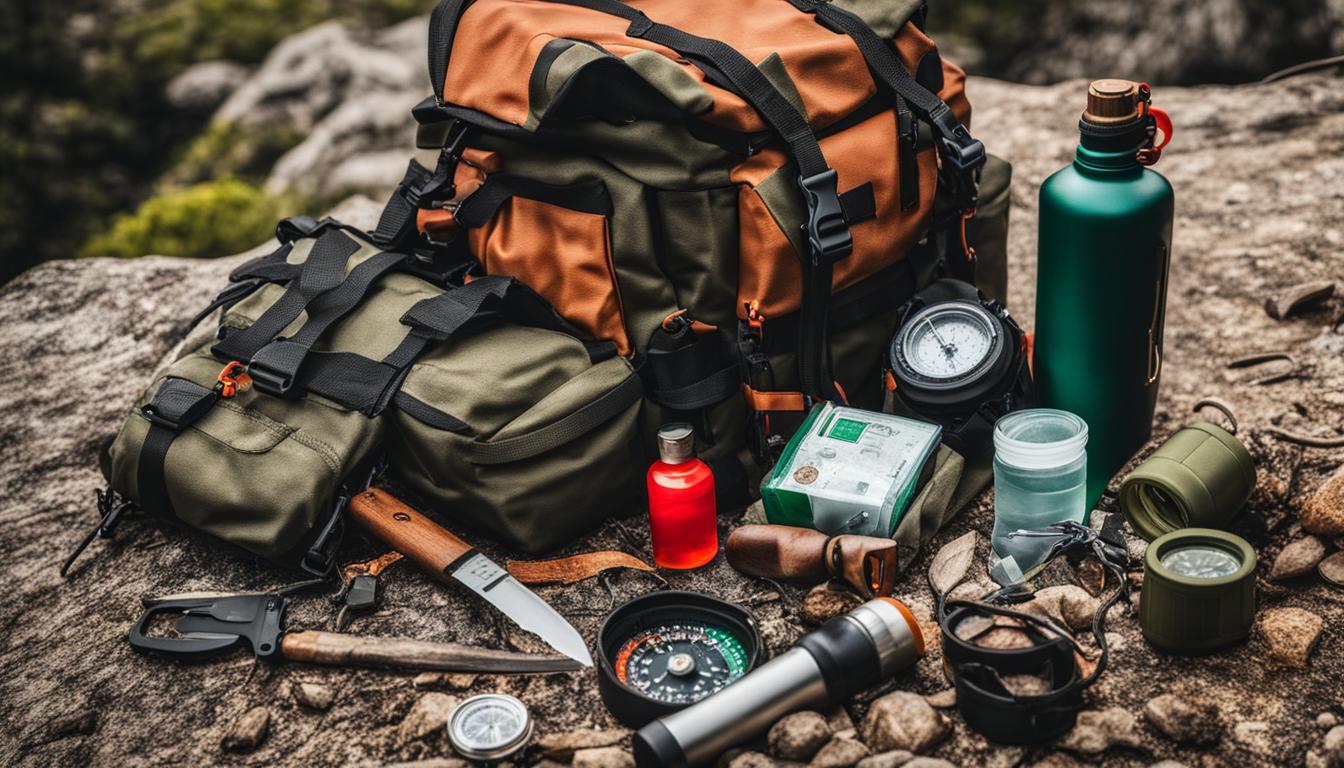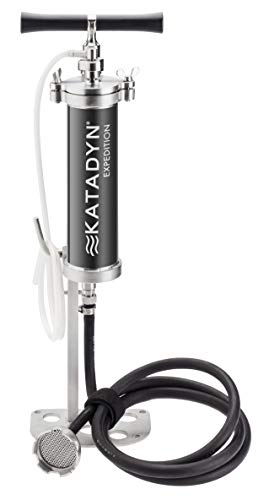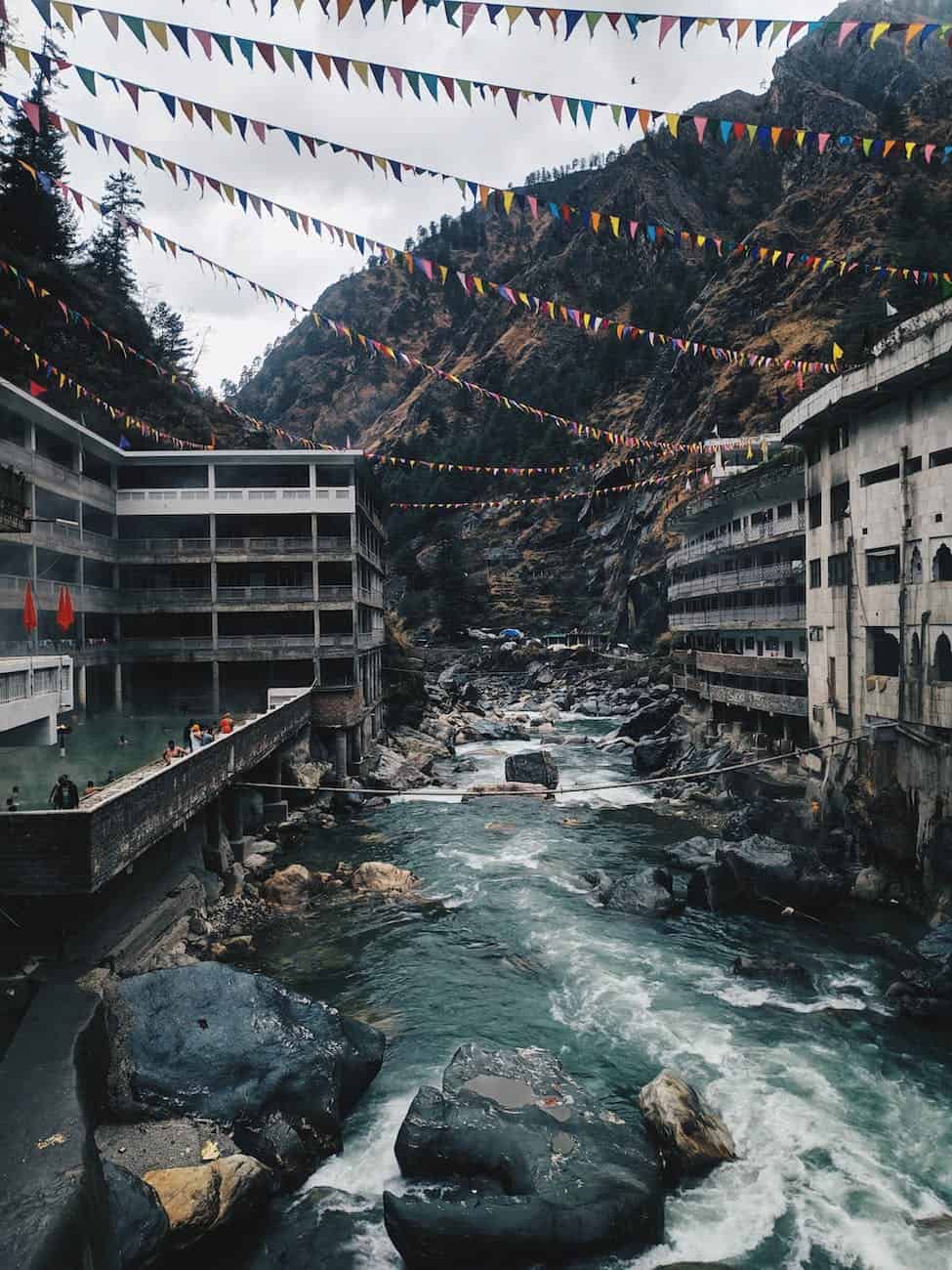In the world of survival, having the right gear is essential. Whether you are stuck in a remote location or facing a crisis in an urban setting, reliable equipment can make the difference between life and death. That’s why I always recommend investing in multi-functional survival tools. These tools offer versatility and convenience, making them a must-have in any emergency kit or bug-out bag.
I know from experience how beneficial these tools are when it comes to staying alive during desperate times. They provide multiple functions that reduce bulk in your pack while allowing for flexibility if conditions change. Plus, they often come at a fraction of the cost compared to buying individual pieces of equipment separately.
With so much riding on having access to dependable resources in an emergency, I firmly believe everyone should include some form of the multi-purpose tool as part of their survival arsenal. In this article, I’ll go into detail about my top picks and explain why they’re must-haves for anyone looking to increase their chances of making it through dangerous situations unscathed!

Typical Multi-Tools Are Easy To Carry And Extremely Versatile
Multi-purpose tools are an essential part of any survivalist’s kit. Whether you’re headed into the wilderness or just want to be prepared for everyday life, a multi-tool is invaluable. The Skeletool CX from Leatherman offers a lightweight, portable design that packs seven functions in one small package. It has a knife blade, pliers, wire cutters, bottle opener, carabiner clip and screwdriver all built into a sleek frame with stainless steel construction.
The Swiss Army Multi-Tool also comes highly recommended as it features 14 different tools in one compact device. Gerber Gear also makes excellent multi-tools like the Center Drive which includes extra long blades and full-size pliers for precision work on various projects outdoors. All these options offer great value for money and ensure you have access to multiple tools when you need them most. With their versatility and portability, multi-tools are perfect for camping trips or emergency situations where every ounce counts.

They provide convenience without compromising performance or quality so they can take whatever punishment you throw at them. In short, having the right multi tool in your pocket will make life much easier no matter what situation you find yourself in!
Necessary Features For A Survival Tool
When it comes to survival, having the right gear is essential. A multi-purpose tool for survival can be a lifesaver in an emergency situation. These tools are designed with the necessary features that make them invaluable in any wilderness or urban setting.
One of the most important features of a good survival multitool is its versatility. The Leatherman Wave, for example, boasts 18 different tools and functions that can handle almost anything you need while out in the wild. It also has a convenient pocket clip so you can easily carry it on your belt or backpack. For those looking for something more lightweight, the Leatherman Skeletool CX offers seven different tools and weighs just 5 ounces.
Another feature to consider when choosing a multi-tool is durability and corrosion resistance – two qualities that are especially important if you’re trekking through wet conditions like rain forests or snow fields. The Leatherman Signal is made from stainless steel with anodized aluminum handles making it waterproof and rust proof so you don’t have to worry about damaging your valuable gear.
If portability is key, then look no further than the Leatherman Style PS which fits comfortably into your pocket or purse without weighing down your load. Despite its petite size, this handy device still packs eight useful tools including pliers, scissors and several screwdrivers perfect for minor repairs on the go!
No matter what type of environment you find yourself in, having a reliable multi-purpose tool at hand can help get you out of tight spots quickly and safely. With all these great options available today, there’s no reason not to invest in one of these incredible gadgets!
Benefits Of Using Multi-Purpose Tools
Multi-purpose tools are essential for survival. They offer a variety of functions to help us in any situation. From stainless steel blades and army knives, to the Victorinox Swiss Army Knife and Leatherman Charge multitools, these tools provide countless benefits that can be used in almost any emergency.
The first benefit of multi-purpose tools is their versatility. These pocket-sized devices have everything you need – from knife blades and screwdrivers, to scissors or even saws. With just one tool, you can easily handle various tasks like cutting rope or tightening screws without having to bring multiple items with you on your outdoor journey.
Another great advantage of using multi-tools is their durability. Most models are made out of high quality materials such as stainless steel, making them extremely strong and reliable even under harsh conditions. This means they won’t corrode or wear down over time, so you don’t have to worry about replacing them anytime soon! Additionally, if you take proper care of it by cleaning it regularly and sharpening its blade when needed, a good multi-tool should last for many years without fail.
No matter what type of adventure you’re embarking on – camping trips, rock climbing excursions or simply taking a stroll outdoors – having the right gear is key to staying safe and prepared during any activity. Multi-purpose tools provides an invaluable resource when navigating nature’s ever changing elements; offering convenience while keeping us prepared for anything life may throw our way! With this powerful yet lightweight device at hand, we can face whatever comes our way with confidence knowing we have the best possible solution available for success.
Bandanas Are Surprisingly Useful Accessories
Have you ever considered how useful a bandana can be for survival? Believe it or not, the humble bandana is one of the most underrated accessories in any emergency kit. In fact, they are even more important than having a pocket knife or other multi-purpose tools in your survival kit. Bandanas can provide protection from sun and wind, absorb sweat and act as an extra layer to keep warm when temperatures drop. They can also be used to filter water, create makeshift slings for carrying items and make tourniquets for medical emergencies. All these features make them invaluable additions to any survivalist’s gear.
Bandanas come in different sizes, materials and colors so anyone can find something suitable for their needs. Whether you need them while camping or during an unexpected natural disaster – such as floods, hurricanes or earthquakes – they will always prove useful in some way. Plus, they fold up easily into small packages and weigh almost nothing; making them ideal companions on hikes or backpacking trips when space and weight become crucial factors.
Given all these uses, it isn’t surprising why everyone should have at least one good quality bandana included in their emergency aid kits and general outdoor gear collection. Not only do they add style but could save lives too! With its endless possibilities for use, a bandana is undoubtedly must-have item for every serious survivalist looking to stay prepared out in the wild.
ParaCord Helps Survivalists Get Many Things Done
Paracord is a must-have survival tool for any serious outdoorsman. It’s durable and can be used in countless ways to help with camping, hunting, and even emergencies. A Swiss Army Knife or Leatherman-style multi-tool is often recommended as the go-to item when heading into the wilderness, but a para-cord should also be part of your kit. Its heavy-duty construction makes it perfect for tying off tarps, bundling supplies together, building shelters, fishing lines – you name it! And because its so versatile, a single strand of para-cord can replace several more bulky items from your pack.
When looking for para cord for outdoor use make sure to get some that is rated up at least 550 pounds. This will ensure that whatever knotting or lashing task you need done won’t be compromised by inferior quality material. Another great feature about para-cord is that many styles come equipped with an integrated fire starter, allowing you to easily start campfires without bringing additional gear. Also keep in mind the style PS (para-shock) which has superior shock absorption properties making it ideal for rappelling down steep terrain or hoisting yourself up something like a tree stand or ledge safely.
The many uses of para-cord make it essential equipment for anyone who likes spending time outdoors; whether they are an avid hiker, camper or hunter. With one piece of this incredibly strong yet lightweight rope, survivalists can do almost anything!
Whistles Can Provide Safety And Be Used For Communication
Para-cord helps survivalists get many things done, but other multi-purpose tools can be used to ensure safety and communication. Whistles provide a great way to signal for help when in distress or alert others of danger. Here is a list of three essential whistles:
- Gerber Dime – This small and lightweight whistle is perfect for any emergency situation due to its compact size and stainless steel construction. It includes an integrated pocket clip to keep it on hand.
- Compact Survival Whistle – This whistle has a loud sound output with easy one-handed operation, making it the ideal choice for camping trips or outdoor adventures. Plus, it’s built from tough materials like stainless steel and high-impact plastic, making it durable enough to last through any adventure!
- Multi-Tool Whistle – This tool combines a whistle and multi-function blade into one convenient device so you can easily carry around all your essential survival tools without worrying about carrying multiple items at once. With its combination of features, this whistle is definitely worth considering if you’re looking for the ultimate convenience in an emergency.
Whistles are a great addition to any survival kit because they offer peace of mind knowing that you have the means to call out for help should anything happen unexpectedly while outdoors. From signaling location to warning off predators, these simple yet effective devices can make all the difference between life and death in certain scenarios. In addition, most modern whistles come with either stainless steel constructions or rugged plastics that are designed to stand up against extreme weather conditions such as rain or snow, ensuring reliable performance even during harsh conditions.
Stainless Steel Constructions
When it comes to stainless steel constructions, a survival knife is an essential tool that should never be overlooked. This multi-purpose tool can help you with tasks like cutting rope and building a shelter in the wilderness.
It’s also great for defending yourself if you ever find yourself facing danger while out in the wild. Its strong stainless steel construction makes it reliable and durable so you can depend on it when necessary. Additionally, its versatility allows you to use it for other activities such as hunting or fishing. With a variety of sizes and shapes available, there’s sure to be one that fits your needs perfectly.
Having the right tools around can make all the difference in a survival situation, so having quality items constructed from stainless steel can ensure they last longer. Not only are they more resistant to wear and tear but their strength is unmatched – making them invaluable assets during times of need. Furthermore, many come equipped with features specifically designed for tackling any terrain or weather condition you may experience in the outdoors.
These versatile pieces of equipment provide peace of mind; knowing that no matter what happens, you can always access something reliable and sturdy. And because these tools are typically small enough to fit into most packs without being too bulky or heavy, they’re easy to transport along with your gear wherever life takes you.
Keep Fishing Line In Your Pack For Survival Situations
Having fishing line in your pack is essential for any survival situation. Fishing line offers various multi-purpose tools, allowing you to make repairs and construct items such as snares that can help increase your chances of survival. It’s lightweight, durable, and easy to store meaning it won’t take up too much space in your bag while also providing excellent value.
Not only can fishing line be used for making repairs or constructing items like traps, but it can also be used to catch fish which will provide valuable sustenance during an emergency situation. With just a few simple supplies, some string and a hook, you can have yourself a functioning rod with minimal effort. All this means that having access to good quality fishing line could give you the edge when it comes to finding food sources in an unfamiliar environment.
Fishing line isn’t just limited to being useful in emergency scenarios either; it’s perfect for everyday activities too! Whether you’re camping or on a day trip out into nature, having reliable equipment at hand is always beneficial – after all, you never know when something might go wrong. So don’t forget to keep some fishing line handy before heading out into the unknown! Aluminum foil has plenty of uses in emergency survival so next we’ll discuss why its important to bring foil along on adventures.
Aluminum Foil Has Plenty Of Uses In Emergency Survival
Aluminum foil is a multi-purpose tool for survival in any emergency. It’s lightweight yet durable, and it can be used to reflect heat away from you or your shelter, cook food quickly using the sun’s rays, make quick repairs on broken items, and even keep things dry during wet weather conditions.
Using aluminum foil as an insulator is one of its most valuable applications in an emergency situation. You can wrap yourself up with several layers of foil to stay warm when temperatures drop below freezing. Additionally, you can use it to line the inside walls of your shelter, which will help keep warmth trapped inside while reflecting cold outside temperatures back out into the environment.
The versatility of aluminum foil makes it a great item to have on hand when preparing for a survival scenario. Its reflective properties enable you to create makeshift cooking vessels that are capable of trapping heat from the sun so that you can prepare food without having access to traditional means such as fire or electricity. Moreover, if something breaks like a pot or pan in your kit, then you could use aluminum foil as a temporary repair until you get back home again where permanent fixes are possible.
Considering these features and uses for aluminum foil, it’s clear why this simple material should become an essential part of every prepper’s arsenal of supplies. As you’re planning ahead for potential disasters or want added protection against severe weather conditions, adding some rolls of quality-grade aluminum foil onto your list is always recommended. From insulation to protect against extreme temperatures and rain, this handy material has plenty of uses that’ll come in handy no matter what might happen next! With heavy duty design options available too there’s certainly something suitable for everyone here.
Heavy-Duty Design Options
When it comes to multi-purpose tools for survival, one of the most important things you need is a heavy duty design. Heavy-duty designs provide strength and durability that can withstand harsh conditions, making them essential in any emergency situation.
The good news is there are plenty of options out there when it comes to finding the right tool for your needs. Many companies specialize in creating high-quality, heavy-duty tools specifically designed for survival situations. From knives to axes and even shovels, these companies have thought of everything you could possibly need in an emergency.
These specialized tools come with features like reinforced handles, rust-proof materials, locking mechanisms and more – all meant to give you maximum performance during times of crisis. Whether you’re looking for a light-weight option or something more robust, there’s sure to be a design that meets your requirements. Investing in the right gear now will ensure your safety and peace of mind should an unexpected disaster arise.
With the proper heavy duty design options available on the market today, anyone can be prepared when faced with a challenging situation. These versatile tools will help make sure you’re always equipped no matter what Mother Nature throws at you! Now let’s explore how emergency kits and aid kits can assist with long term preparedness solutions.
Emergency Kits And Aid Kits
When it comes to survival, having the right tools can make all the difference. Multi-purpose tools are essential for any emergency or aid kit. They provide a compact solution with multiple uses in one device and save time and space – which is crucial when you need to be prepared for anything!
Credit cards come in handy too – many offer special features such as roadside assistance, car rental discounts, hotel rewards, and more. If you find yourself stuck in an emergency situation far from home, your credit card may prove invaluable. Be sure to check out what benefits your particular card offers so you know how best to use it should a crisis arise.
Having access to reliable gear is key when dealing with emergencies. Whether it’s an emergency kit or something small like a multi-purpose tool, being ready will always make life easier no matter where you are or what situation arises. Headlamps are needed in almost every survival situation so consider including them as part of your overall strategy for staying safe and secure during unexpected events.
Headlamps Are Needed In Almost Every Survival Situation
Headlamps are essential for any survival situation. They provide visibility in the dark, which is incredibly important when navigating and finding your way around unfamiliar terrain or even simply setting up camp after sunset. Headlamps also free up both hands for tasks like cooking meals, tending a fire, tying knots, etc. That’s why multi-purpose tools for survival are so handy – they can save you from having to carry multiple items to do one job.
The best headlamps offer long battery life, adjustable brightness settings and an ergonomic design that fits comfortably on your head without slipping off during movement. It’s also ideal if it comes with additional features, such as waterproofing and different colored lenses (red light helps maintain night vision). Some models even come equipped with emergency strobe lights! No matter what type of headlight you choose, make sure always to have at least one in your kit.
Carabiners can be used to secure various things together and keep them close while camping or hiking. They’re invaluable pieces of gear that can help keep all your must-haves within easy reach. There are many types available ranging from lightweight keychain carabiners to heavy duty mountain climbing ones; select the right size depending on how much weight it needs to hold and where it will be used most frequently.
Carabiners Can Be Used For Securing Different Things
Carabiners are essential multi-purpose tools for survival. They’re not just for rock climbers or mountaineers – anyone who needs to secure something quickly can use them! Carabiners have a wide range of uses, from securing tents and tarps to hanging food away from animals. You can also use carabiners as makeshift pulleys too.
When using carabiners in the wild, it’s important to choose ones with non-locking gates so they don’t accidentally open when you least expect it. Also make sure that you inspect your carabineer before each use and check its strength rating against what you will be attaching it to; if the weight is higher than the rating then look for another one. Lastly, be mindful of where you attach your carabiner – sharp edges on rocks or trees may cause wear over time which reduce its effectiveness.
Securely attached items ensure safety when traveling in remote areas and carabiners can provide peace of mind knowing things won’t come loose unexpectedly. With proper care and attention, these simple but invaluable pieces of gear can help keep us safe during our outdoor adventures! Now onto knives: effective all-purpose gathering tools…
Knives Are Effective All-Purpose Gathering Tools
Knives are essential for survival in any environment. Did you know that over 80 percent of all outdoorsmen carry a knife? It’s no surprise, considering the versatility and convenience they provide. As an all-purpose gathering tool, knives can cut branches or vines, carve wood, skin animals, prepare food, make fires, split kindling and much more. They can even serve as a primary weapon if need be.
The value of owning different types of knives cannot be overemphasized. A regular pocketknife is ideal for light tasks such as slicing fruit or carving twigs into arrows. Larger blades like machetes and hatchets offer greater strength and durability while also serving multiple functions around camp. The right combination of versatile blades will help ensure success in almost any outdoor activity.
No matter where your adventures take you, it’s important to have reliable tools on hand to get the job done safely and efficiently. For this reason, having quality knives at the ready is often the difference between life-saving preparedness and total failure in a hostile situation. With their many uses and ease of access, these indispensable tools can definitely give peace of mind when planning for unexpected events beyond our control. Duct tape is another cheap means of making quick repairs when needed–a topic worthy of its own discussion!
Duct Tape Is A Cheap Means Of Quick Repairs
Knives are a great all-purpose tool, but they can’t do everything. You’ll often need something else to get the job done quickly and effectively. Enter duct tape – the ultimate versatile go-to tool for any survival situation.
Duct tape is a cheap means of quick repairs in almost any circumstance. It’s strong enough to mend broken equipment or seal up openings, such as holes in tents or even cracks in windows. Plus, it sticks well on virtually any surface without leaving residue behind. With just one roll, you can repair anything from cracked pottery to ripped clothing and more!
| Pros | Cons |
|---|---|
| Strong adhesive | Not waterproof |
| High tensile strength | Can leave residue behind |
| Versatile application options | Not easy to reposition once applied |
| Cheap & Quick Repair Solutions | Can be difficult to remove when needed |
The versatility of duct tape makes it an incredibly useful item to have on hand in your emergency kit. Whether you’re patching up a tent, repairing ripped clothes or creating a makeshift shelter out of debris, this inexpensive material has got your back every time. It’s also lightweight and compact so you can easily carry multiple rolls with you wherever you go!
All these features make it the perfect multi-purpose tool for any survival scenario. So don’t forget to add some duct tape into your next adventure preparedness kit – it could save your life!
Frequently Asked Questions
What Is The Best Multi-Tool For Survival?
When it comes to survival, every adventurer needs the right tool. From hunters and hikers to preppers and urbanites, having a reliable multi-tool is essential for any kit. But what is the best one?
There are many options out there, from traditional swiss army knives to modern tactical tools. Depending on your specific situation and environment, different multi-tool types can provide varying comfort levels and convenience. To make matters more confusing, each type has its own advantages and drawbacks—so how do you decide which one is right for you?
The key to finding the perfect multi-tool lies in understanding your needs. Are you looking for something lightweight or heavy duty? Do you need pliers or wire cutters? How about blades or screwdrivers? Answering these questions will help narrow down the options so that you can choose the ideal piece of equipment for your requirements.
What Is The Most Important Feature For A Survival Tool?
When looking for the best multi-tool for survival, it’s important to understand what feature is most essential. Whether you’re an experienced outdoorsman or a beginner who wants to be prepared in case of emergency, there are certain features that should never be overlooked when choosing a tool.
As a survival gear expert, I believe the top priority should always be versatility. Having one piece of equipment with multiple functions can make all the difference in an emergency situation. A good multi-tool should have blades and pliers as well as other tools such as screwdrivers, saws and wrenches –– all made from high quality steel so they won’t break easily under pressure. It also helps if your tool is lightweight and compact enough to fit into a pocket or small bag, making it easy to carry around at all times.
Safety should also be considered when selecting a multi-tool for survival purposes. Look out for models that include locking mechanisms on the blades and tools so they don’t accidentally open while being carried around. This ensures your safety and those around you since sharp objects need to be handled with care. In addition, choose something waterproof so you can use it even if conditions become wet or humid.
Having the right equipment makes us feel empowered and ready for any challenge life throws our way –– especially when it comes to surviving tough situations in nature! That’s why it’s important to find a reliable tool that has all the features necessary for successful outdoor adventures. With these considerations in mind, you’ll soon find yourself equipped with the perfect multi-tool for your needs!
How Do You Use A Bandana For Survival Purposes?
If you’re looking for versatile pieces of survival gear, a bandana is an excellent choice. It’s not only lightweight and easy to carry but also has multiple uses in emergencies. As a survival expert, I’m here to tell you how this simple piece of cloth can help save your life.
First up: protection. A bandana can be used as a face mask or head wrap to protect yourself from the elements like wind, dust, sunburns, etc. Additionally, they make great makeshift towels if needed and are easily stored away when not in use. Here are some ways you can utilize them:
- Tie it around your neck to prevent sunburns while out on hikes;
- Wrap it around your head for extra warmth during colder temperatures;
- Secure it around your mouth and nose as a filter against smoke or other airborne particles;
- Use as a towel if water isn’t available for cleaning purposes.
You’ll also find that having one handy will come in useful when dealing with minor injuries. Bandanas have long been known to act as tourniquets because they create tight knots and quickly absorb blood. They also work well for making makeshift slings or compresses for wounds and sprains that may occur while outdoors. Furthermore, these pieces of fabric can be utilized as flags or markers to signal someone nearby in case of distress – which could potentially become lifesaving depending on the situation at hand!
To sum up, there’s no limit to what a bandana can do in terms of providing basic needs such as shelter, protection and medical aid – all invaluable skills required for any type of outdoor excursion or general preparedness in dire times!
What Are The Advantages Of Having Para-Cord On Hand?
When it comes to survival gear, one item you should always have on hand is a para-cord. It can be used for a variety of purposes, from setting up shelters and creating makeshift tools, to rappelling down cliffs or securing items together. Para-cord is incredibly strong and durable, which makes it essential in any situation that requires rope or cordage.
One of the biggest advantages of having para-cord with you is its versatility. You can use it as a clothesline when camping, tie back branches, fashion nets out of it for fishing, hang food away from wildlife or secure items onto your vehicle for transport. I’ve seen people even make hammocks and bracelets out of para-cord! Your imagination only limits its uses.
In addition to being versatile and strong, another great thing about having para-cord around is its compact size; you can store quite a bit of cordage in a very small space without much weight added to your pack. This means that if you’re stuck in an emergency where resources are scarce, you’ll have plenty of material available to use at your disposal without lugging around too much extra weight. Plus, since there’s so many colors to choose from these days – like orange blaze camo or digital desert tan – finding the right type of paracord won’t be hard either.
Para-cord really packs a punch when it comes to surviving in the wilderness – ensuring you always have some within reach can help ensure that no matter what happens during your adventure, you’ll be well-equipped with everything necessary for success!
What Are The Most Effective Uses For Aluminum Foil In Survival Situations?
As a survival gear expert, I am here to tell you that aluminum foil is an often overlooked but immensely valuable tool in any outdoor adventure. Believe it or not, the reflective properties of this material can be used for a variety of purposes in various situations:
From shelter-building to fire-starting, aluminum foil is an invaluable asset when out and about. Here’s why:
- Fire-Starting: Aluminum reflects heat extremely well and can be used to concentrate sunlight onto dry materials such as tinder and kindling. This enables even novice campers to start fires with relative ease.
- Water Collection: Foil can be constructed into makeshift bowls which will collect dew from leaves overnight – providing clean drinking water without having to purify gathered liquid.
- Signaling: In emergencies where rescue may be needed, shiny surfaces reflect light easily and are visible from great distances away. By placing pieces of aluminum on trees or other high points around your location, rescuers have a greater chance of finding you quickly.
These three uses alone demonstrate how versatile aluminum foil really is; however many more applications are depending on the situation at hand! It just requires creative thinking and problem-solving skills to discover them all – making sure you’ve got some packed along with your camping supplies could save your life one day! With its array of possible functions, aluminum foil deserves recognition as one of the most effective tools in any outdoorsman’s arsenal.
How Can Whistles Be Used as Multi-Purpose Tools in Survival Situations?
In survival situations, whistles for safety and communication are invaluable tools. Emitting a loud, high-pitched sound, whistles can alert rescuers to your whereabouts. Additionally, they can serve as a means of communication with fellow survivors, conveying messages and coordinating actions. Lightweight and easy to carry, whistles offer a versatile solution for increasing chances of rescue and maintaining effective communication during challenging circumstances.
Conclusion
Having the right multi-tool for survival is essential. A quality tool will help you stay safe and prepared in a variety of situations, from basic first aid to emergency repairs. The most important feature when selecting a survival tool is versatility; it should be able to do many different tasks easily. Additionally, knowing how to use items like paracord and aluminum foil can further expand your capabilities.
For example, having a para-cord with you could prove invaluable if you find yourself lost while hiking. You could quickly construct an emergency shelter or build a fire, both of which would greatly increase your chances of getting back safely. Similarly, aluminum foil can be used as a makeshift cooking device and reflector by creating flat surfaces out of rocks or tree stumps. Finally, using bandanas for multiple purposes such as signaling for help or collecting water, makes them an indispensable part of any wilderness kit.
In conclusion, having the right multi-purpose tools on hand can make all the difference during an emergency situation. Knowing what features are essential and how to utilize objects like paracord and aluminum foil can mean the difference between life and death in extreme circumstances. Investing time into researching available options and learning best practices for using these tools will ensure that you’re always ready for whatever comes your way!










